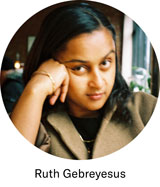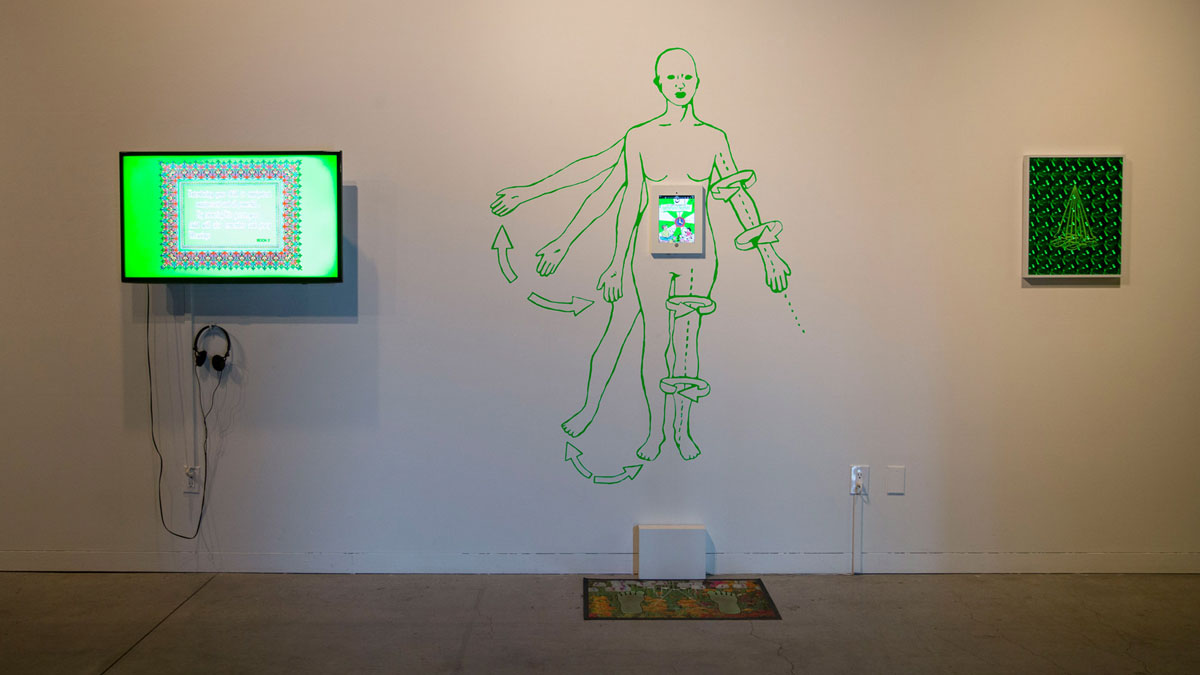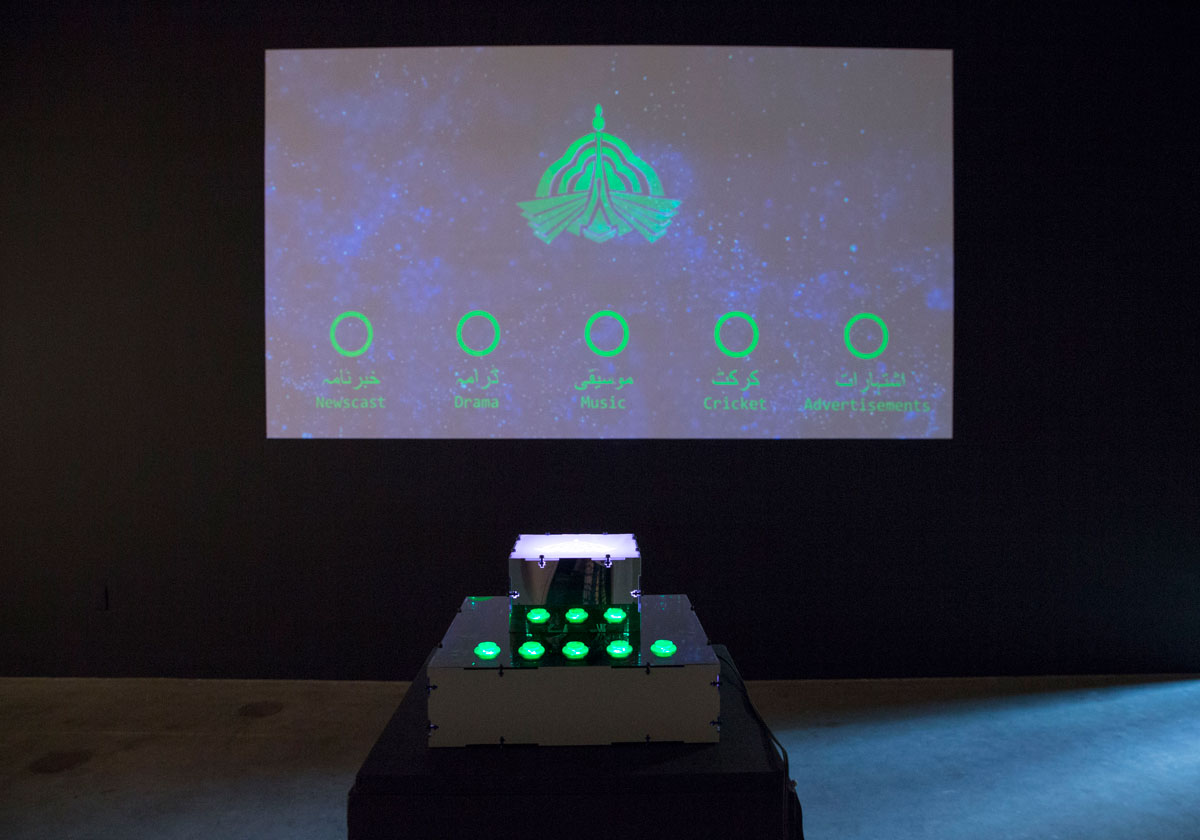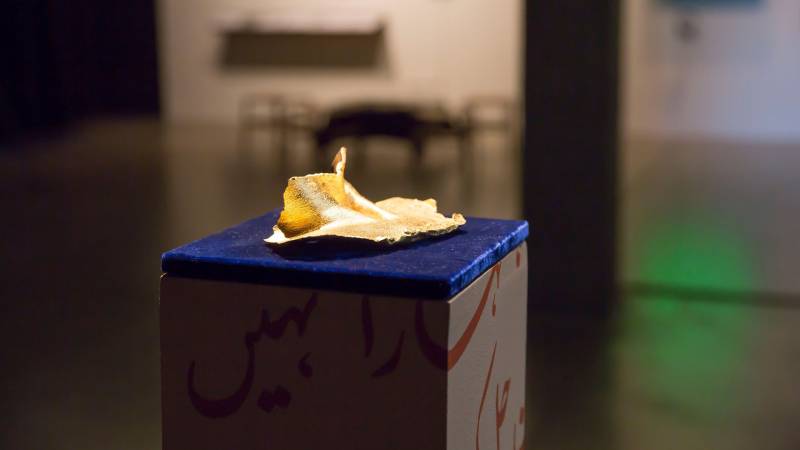The first sound you hear when you enter Southern Exposure’s Where do you want ghosts to reside? is slow but steady dripping, a watery metronome calibrating the audience for the reality that awaits. Curated by multimedia artists Azin Seraj and Zulfikar Ali Bhutto, the show and corresponding performance thrust viewers into myths and memories as interpreted by six artists from South Asian, Southwest Asian and North African diasporas. The common thread of the show is the Muslim world—though it’s a loose thread, mapped virtually across Egypt, Pakistan, India and Iran, all countries of origin or significance to the participating artists.

Inside the dark and cavernous gallery, Morehshin Allahyari, Anum Awan, Arshia Fatima Haq and Umber Majeed’s pieces flicker and chatter, inviting attention and interaction to their respective corners. Awan’s corner offers a gamified interactive video installation from Pakistan Television Network’s archives. Steps away, Majeed lays out a mathematical feminist speculative imagining of Pakistan’s nuclear force. At the same time, Allahyari’s 3D-modelled jinns absorb current political and personal disruptions into their force fields.

Notably, the curators made a deliberate choice to minimally contextualize the show. There’s no extensive writing on the wall about each country’s geo-political history or relationship to the United States’ current administration. (For the latter, one need only follow the news generated by this country’s mercurial president.) Instead, gallery-goers are thrust inside thousand-year-old myths about Islamic spiritual figures and the artists’ modern interpretations of them. It’s an approach that reframes where a story can start, instead of centering itself on the knowledge, or lack thereof, of American audiences.
The title of the show, Where do you want ghosts to reside?, is borrowed from the first stanza of Lebanese poet and artist Etel Adnan’s short and explosive war elegy, “XLIV” from The Arab Apocalypse. Adnan’s poem speaks of a scattered diaspora whose fate is precarious. The exhibition’s answer to the poem’s question appears to be, in part, a borderless digital space. The heavy use of technological mediums in the show is evidence of how virtual space serves as a safe host for cultural artifacts and memories. Virtual space circumvents geographical borders that have proven dangerous; it encompasses ideas of home that are too slippery to hold.




